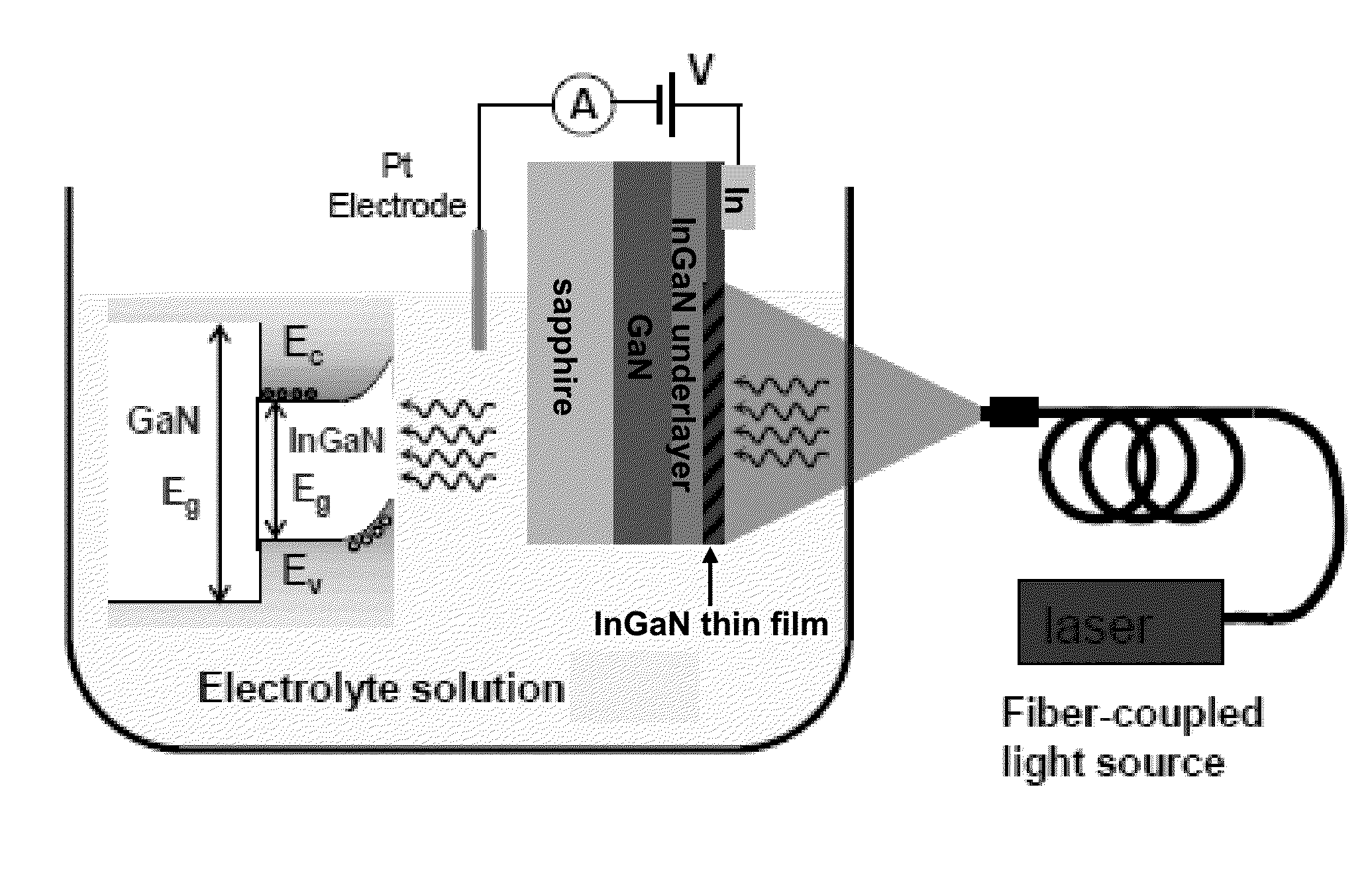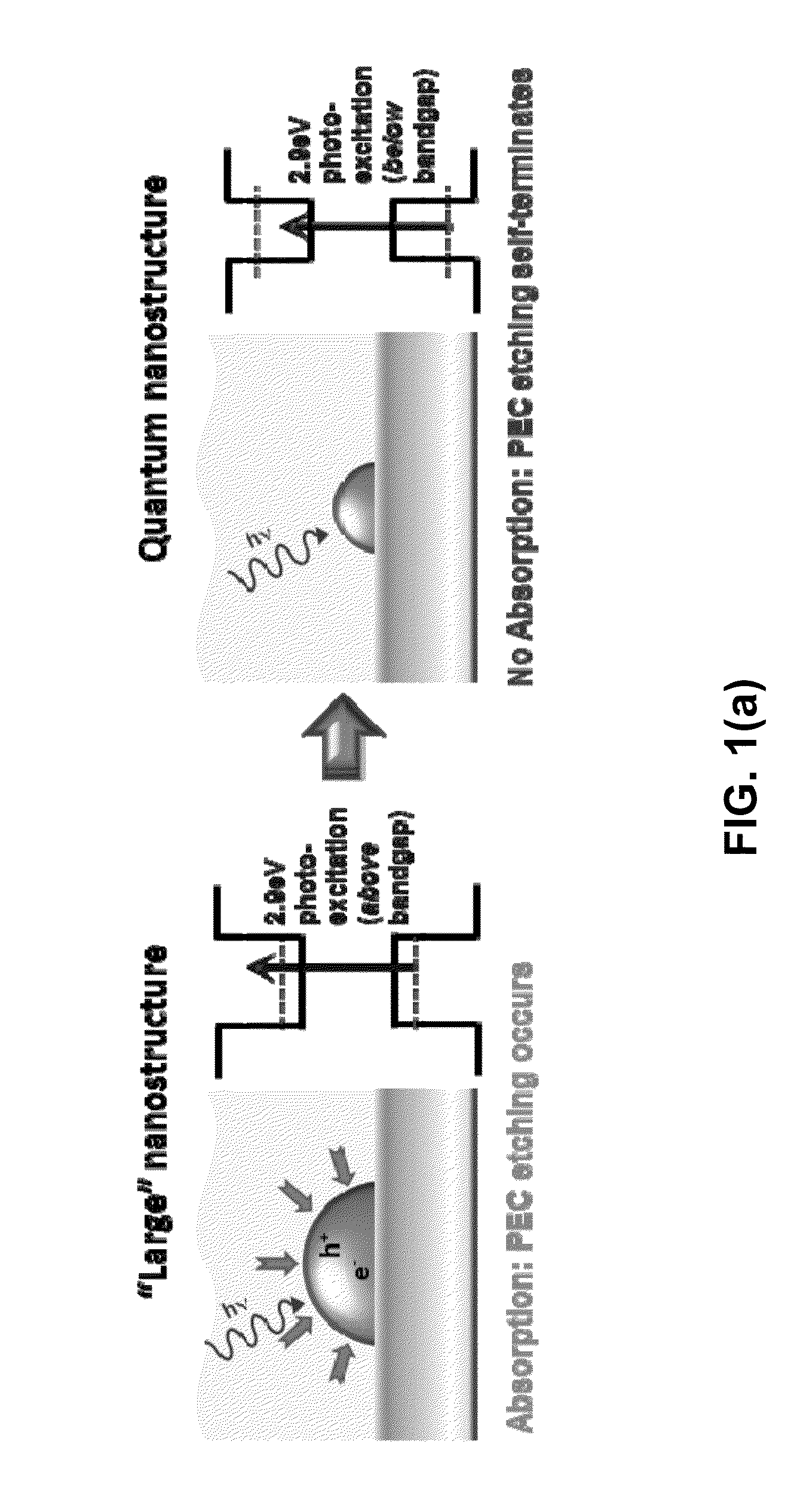Quantum-size-controlled photoelectrochemical etching of semiconductor nanostructures
a photoelectrochemical and quantum-size control technology, applied in the manufacture of nanostructures, semiconductor lasers, microstructure devices, etc., can solve the problems of essentially zero etch rate and light absorption drop, so as to improve the etch rate of iii-nitride materials, reduce the volume of the film, and reduce the light absorption
- Summary
- Abstract
- Description
- Claims
- Application Information
AI Technical Summary
Benefits of technology
Problems solved by technology
Method used
Image
Examples
Embodiment Construction
[0026]According to the present invention, quantum-size effects are used to control the fabrication of semiconductor nanostructures, with significant implications for the realization of a broad range of future nanoelectronic and nanophotonic devices. The quantum-size-controlled photoelectrochemical (QSC-PEC) etching scheme is illustrated in FIG. 1(a). The initial step in QSC-PEC etching is semiconductor surface oxidization by photoexcited holes. See A. J. Bard, Science 207, 139 (1980); and P. A. Kohl, IBM J. Res. Dev. 42, 629 (1998). Photoexcitation depends on light absorption; light absorption depends on bandgap; and in the quantum-size regime bandgap depends on nanostructure size. In particular, as the size of a nanostructure gets smaller, the bandgap goes up. Thus, properly selected narrowband light will be absorbed by large but not small nanostructures, and, therefore, PEC etching can be self-terminated at a size determined by the wavelength of that narrowband light. Although qua...
PUM
| Property | Measurement | Unit |
|---|---|---|
| thickness | aaaaa | aaaaa |
| width | aaaaa | aaaaa |
| width | aaaaa | aaaaa |
Abstract
Description
Claims
Application Information
 Login to View More
Login to View More - R&D
- Intellectual Property
- Life Sciences
- Materials
- Tech Scout
- Unparalleled Data Quality
- Higher Quality Content
- 60% Fewer Hallucinations
Browse by: Latest US Patents, China's latest patents, Technical Efficacy Thesaurus, Application Domain, Technology Topic, Popular Technical Reports.
© 2025 PatSnap. All rights reserved.Legal|Privacy policy|Modern Slavery Act Transparency Statement|Sitemap|About US| Contact US: help@patsnap.com



